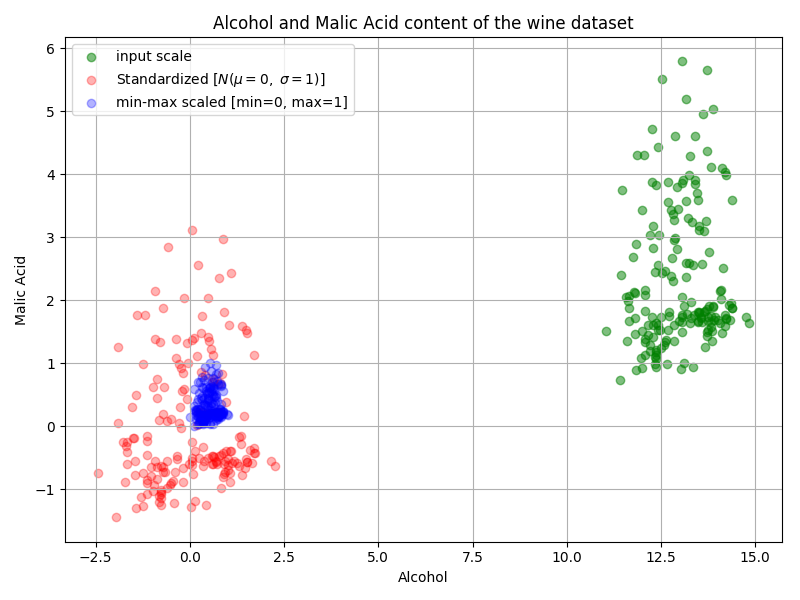标准化方法
Z-score Normalization
Z-score normalization又叫 standardization(规范化),将特征进行缩放使得其具有均值为0,方差为1的标准正态分布的特性。
其中均值$\mu = \frac{1}{N} \sum_{i=1}^N (x_i)$,方差$\sigma = \sqrt{\frac{1}{N} \sum_{i=1}^N (x_i - \mu)^2}$。
标准化特征使其具有0均值1方差不仅对于比较单位不同的测量有用,而且还是众多机器学习算法的普遍要求。如果特征在不同的尺度下,不同的权重更新的速率会差异很大,不利于算法的收敛。
Mix-max Normalization
另一种常用的标准化叫Mix-max normalization,通常被简称为normalization(标准化)。这种方法将数据放缩到一个固定的区间,通常是0到1之间。
Constant Normalization
将数据除以一个固定的常数,比如最大值:
Binary Encoding
类别值(Categorical values)例如性别可以编码为0和1,如男性为1,女性为0,也可以编码为-1和1.
Manhattan Encoding
如果是不能二进制编码的类别值,可以使用曼哈顿编码Manhattan encoding,使用0或1来表示特征是否被包含:
例如:在宗教类别中,可以将穆斯林(Muslim)、印度教(Hindu)和基督教(Christian)分别编码为 [1 0 0]、[0 1 0] 和 [0 0 1]。
示例代码
代码参考自About Feature Scaling and Normalization
1 | import pandas as pd |
结果


